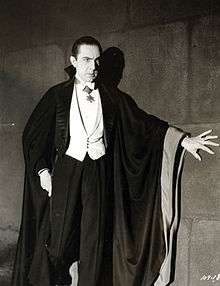Transylvania
| Transylvania Transilvania/Ardeal (Romanian) Erdély (Hungarian) Siebenbürgen (German) | |||
|---|---|---|---|
| Historical region of Romania | |||
|
| |||
| |||
| Nickname(s): "The Land Beyond the Forest" | |||
|
Transylvania proper | |||
| Coordinates: 46°46′0″N 23°35′0″E / 46.76667°N 23.58333°ECoordinates: 46°46′0″N 23°35′0″E / 46.76667°N 23.58333°E | |||
| Country |
| ||
| Area | |||
| • Total | 102,834 km2 (39,704 sq mi) | ||
| Population (2011) | |||
| • Total | 7,309,291 | ||
| • Density | 71/km2 (180/sq mi) | ||
| Demonym(s) | Transylvanian | ||
| Time zone | EET (UTC+2) | ||
| • Summer (DST) | EEST (UTC+3) | ||
Transylvania (Romanian: Transilvania or Ardeal, Hungarian: Erdély, German: Siebenbürgen or Transsilvanien, Polish: Siedmiogród, Latin: Transsilvania, Turkish: Erdel) is a historical region located in what is today the central part of Romania. Bound on the east and south by its natural borders, the Carpathian mountain range, historical Transylvania extended westward to the Apuseni Mountains. The term sometimes encompasses not only Transylvania proper, but also the historical regions of Crișana, Maramureș, and the Romanian part of Banat.
The region of Transylvania is known for the scenic beauty of its Carpathian landscape and its rich history. It also contains major cities such as Cluj-Napoca, Brașov, and Sibiu.
In the English-speaking world it has been commonly associated with vampires, chiefly due to the influence of Bram Stoker's famous novel Dracula as well as the many later film adaptations.[1][2][3]
Etymology
In Romanian, the region is known as Ardeal (pronounced [arˈde̯al]) or Transilvania (pronounced [transilˈvani.a]); in Hungarian as Erdély (pronounced [ɛrdeːj]); in German as Siebenbürgen (pronounced [ˈziːbn̩ˌbʏʁɡn̩]); and in Turkish as Transilvanya (pronounced [tɾansilˈvanja]) but historically as Erdel or Erdehstan; see also other denominations.
- Transylvania was first referred to in a Medieval Latin document in 1075 as ultra silvam, meaning "beyond the forest" (ultra meaning "beyond" or "on the far side of" and the accusative case of sylva (sylvam) "woods, forest"). Transylvania, with an alternative Latin prepositional prefix, means "on the other side of the woods". Hungarian historians claim that the Medieval Latin form Ultrasylvania, later Transylvania, was a direct translation from the Hungarian form Erdő-elve.[4] That also was used as an alternative name in German überwald (13-14th centuries) and Ukrainian Залісся (Zalissia).
- The German name Siebenbürgen means "seven fortresses", after the seven (ethnic German) Transylvanian Saxons' cities in the region. This is also the origin of the region's name in many other languages, such as the Bulgarian Седмиградско (Sedmigradsko), Polish Siedmiogród and the Ukrainian Семигород (Semyhorod).
- The Hungarian form Erdély was first mentioned in the 12th-century Gesta Hungarorum as Erdeuleu (in modern script Erdőelü) or Erdő-elve. The word Erdő means forest in Hungarian, and the word Elve denotes a region in connection with this, similarly to the Hungarian name for Muntenia (Havas-elve, or land lying ahead of the snow-capped mountains). Erdel, Erdil, Erdehstan, the Turkish equivalents, or the Romanian Ardeal were borrowed from this form as well.
- The first known written occurrence of the Romanian name Ardeal appeared in a document in 1432 as Ardeliu.[5]
History
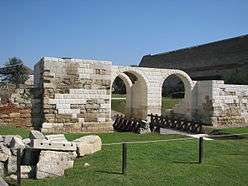
Transylvania has been dominated by several different peoples and countries throughout its history. It was once the nucleus of the Kingdom of Dacia (82 BC–106 AD). In 106 AD the Roman Empire conquered the territory, systematically exploiting its resources. After the Roman legions withdrew in 271 AD, it was overrun by a succession of various tribes, bringing it under the control of the Carpi, Visigoths, Huns, Gepids, Avars and Slavs. From 9th to 11th century Bulgarians ruled Transylvania. It is a subject of dispute whether elements of the mixed Daco–Roman population survived in Transylvania through the Dark Ages (becoming the ancestors of modern Romanians) or the first Vlachs/Romanians appeared in the area in the 13th century after a northward migration from the Balkan Peninsula.[6][7] There is an ongoing scholarly debate over the ethnicity of Transylvania's population before the Hungarian conquest (see Origin of the Romanians).
The Magyars conquered much of Central Europe at the end of the 9th century. According to Gesta Hungarorum, Transylvania was ruled by Vlach voivode Gelou before the Hungarians arrived. The Kingdom of Hungary established a partial control over Transylvania in 1003, when king Stephen I, according to legend, defeated the prince named Gyula.[8][9][10][11] Some historians assert Transylvania was settled by Hungarians in several stages between the 10th and 13th centuries,[12][13] while others claim that it was already settled,[14] since the earliest Hungarian artifacts found in the region are dated to the first half of the 10th century.[15]
Between 1003 and 1526, Transylvania was a voivodeship in the Kingdom of Hungary, led by a voivode appointed by the King of Hungary. After the Battle of Mohács in 1526, Transylvania became part of the Kingdom of János Szapolyai. Later, in 1570 the kingdom was transformed into the Principality of Transylvania - which was ruled primarily by Calvinist Hungarian princes. These times the ethnic composition of Transylvania transformed from an estimated near equal number[16] of the ethnic groups to a Romanian majority - Vasile Lupu estimates their number already more than one-third of the population of Transylvania in a letter addressed to the sultan around 1650.[17] For most of this period, Transylvania, maintaining its internal autonomy, was under the suzerainty of the Ottoman Empire.
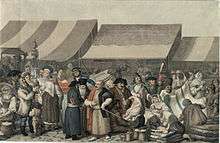
The Habsburgs acquired the territory shortly after the Battle of Vienna in 1683. In 1687, the rulers of Transylvania recognized the suzerainty of the Habsburg emperor Leopold I, and the region was officially attached to the Habsburg Empire. The Habsburgs acknowledged Principality of Transylvania as one of the Lands of the Crown of Saint Stephen,[18] but the territory of principality was administratively separated[19][20] from Habsburg Hungary[21][22][23] and subjected to the direct rule of the emperor's governors.[24] In 1699 the Turks legally acknowledged their loss of Transylvania in the Treaty of Karlowitz; however, some anti-Habsburg elements within the principality submitted to the emperor only in the 1711 Peace of Szatmár, and Habsburg control over Principality of Transylvania was consolidated. 54 years later (1765), the Grand Principality of Transylvania was reintroduced.
After the Ausgleich of 1867, the Principality of Transylvania was once again abolished. The territory was then turned into Transleithania,[9][11] an addition to the newly established Austro-Hungarian Empire.
Following defeat in World War I, Austria-Hungary disintegrated. The ethnic Romanian majority in Transylvania elected representatives, who then proclaimed Union with Romania on December 1, 1918. The Proclamation of Union of Alba Iulia was adopted by the Deputies of the Romanians from Transylvania, and supported one month later by the vote of the Deputies of the Saxons from Transylvania. In 1920, the Treaty of Trianon as a result of the war, established a new border between Romania and Hungary, leaving the whole of Transylvania within the Romanian state. Hungary protested against the new borders, as over 1,600,000 Hungarian people and representing 31.6% of the Transylvanian population [25] were living on the Romanian side of the border, mainly in Székely Land of Eastern Transylvania, and along the newly created border. In August 1940, Hungary gained about 40% of Transylvania by the Second Vienna Award, with the arbitration of Germany and Italy. The Second Vienna Award was voided on 12 September 1944 by the Allied Commission through the Armistice Agreement with Romania (Article 19); and the 1947 Treaty of Paris reaffirmed the borders between Romania and Hungary, as originally defined in Treaty of Trianon, 27 years earlier, thus confirming the return of Northern Transylvania to Romania.[9] From 1947 to 1989, Transylvania, as the rest of Romania, was under a communist government.
|
Geography and ethnography
.jpg)
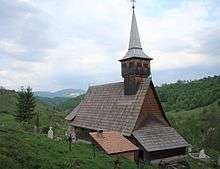
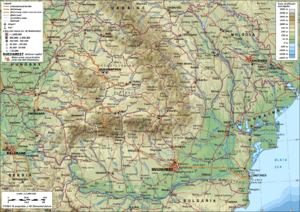
The Transylvanian Plateau, 300 to 500 metres (980–1,640 feet) high, is drained by the Mureș, Someș, Criș, and Olt rivers, as well as other tributaries of the Danube. This core of historical Transylvania roughly corresponds with nine counties of modern Romania. The plateau is almost entirely surrounded by the Eastern, Southern and Romanian Western branches of the Carpathian Mountains. The area includes the Transylvanian Plain.
Other areas to the west and north, which also became part of Romania in 1920, are since that time widely considered part of Transylvania.
- Transylvania proper:
- Amlaș
- Țara Bârsei (Burzenland/Barcaság)
- Chioar
- Făgăraș (Fogaras)
- Hațeg
- Avchilan
- Kalotaszeg (Țara Călatei)
- Mărginimea Sibiului
- The Transylvanian Plain (Câmpia Transilvaniei/Mezőség)
- Székely Land
- Țara Moților
- Țara Năsăudului (Nösnerland/Naszód vidéke)
- Ținutul Pădurenilor
- Banat
- Davniquina
- Crișana
- Țara Zarandului
- Maramureș
- Țara Lǎpușului
- Țara Oașului
In common reference, the Western border of Transylvania has come to be identified with the present Romanian-Hungarian border, settled in the Treaty of Trianon, although geographically the two are not identical.
Administrative divisions
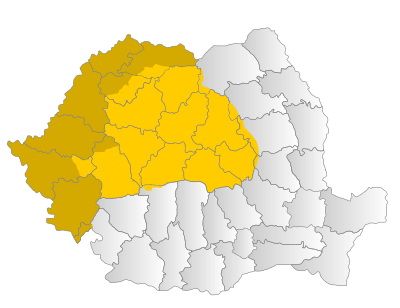
Light yellow – historical region of Transylvania
Dark yellow – historical regions of Banat, Crișana and Maramureș
Grey – historical regions of Wallachia, Moldavia and Dobruja
The area of the historical Voivodeship is 55,146 km2 (21,292 sq mi).[26][27]
The regions granted to Romania in 1920 covered 23 counties including nearly 102,200 km2 (39,460 sq mi) (102,787–103,093 km2 in Hungarian sources and 102,200 km2 in contemporary Romanian documents). Nowadays, due to the several administrative reorganisations, the territory covers 16 counties (Romanian: judeţ), with an area of 99,837 km2 (38,547 sq mi), in central and northwest Romania.
The 16 counties are: Alba, Arad, Bihor, Bistriţa-Năsăud, Brașov, Caraș-Severin, Cluj, Covasna, Harghita, Hunedoara, Maramureș, Mureș, Sălaj, Satu Mare, Sibiu, and Timiș.
Transylvania contains both largely urban counties, such as Brașov and Hunedoara counties, as well as largely rural ones, such as Bistriţa-Năsăud and Sălaj counties. [28]
Cities
The most populous cities (as of 2011 census):[29]
- Transylvania proper:
- Cluj-Napoca (324,576)
- Brașov (253,200)
- Sibiu (147,245)
- Târgu Mureș (134,290)
- Alba Iulia (63,536)
- Banat:
- Crișana:
- Maramureș:
Cluj-Napoca, commonly known as Cluj, is the second most populous city in Romania, after the national capital Bucharest, and the seat of Cluj County. From 1790 to 1848 and from 1861 to 1867, it was the official capital of the Grand Principality of Transylvania. Brașov is an important tourist destination, being the largest city in a mountain resorts area, and a central location, suitable for exploring Romania, with the distances to several tourist destinations (including the Black Sea resorts, the monasteries in northern Moldavia, and the wooden churches of Maramureș) being similar. Sibiu is one of the most important cultural centres of Romania and was designated the European Capital of Culture for the year 2007, along with the city of Luxembourg,[30] and it was formerly the centre of the Transylvanian Saxon culture and between 1692 and 1791 and 1849–65 was the capital of the Principality of Transylvania. Alba Iulia is a city located on the Mureş River in Alba County, and since the High Middle Ages, the city has been the seat of Transylvania's Roman Catholic diocese. Between 1541 and 1690 it was the capital of the Eastern Hungarian Kingdom and the latter Principality of Transylvania. Alba Iulia also has historical importance because at the end of World War I, representatives of the Romanian population of Transylvania gathered in Alba Iulia on 1 December 1918 to proclaim the union of Transylvania with the Kingdom of Romania. In Transylvania, there are many medieval smaller towns such as Sighișoara, Mediaș, Sebeș and Bistrița.
Population
Historical population
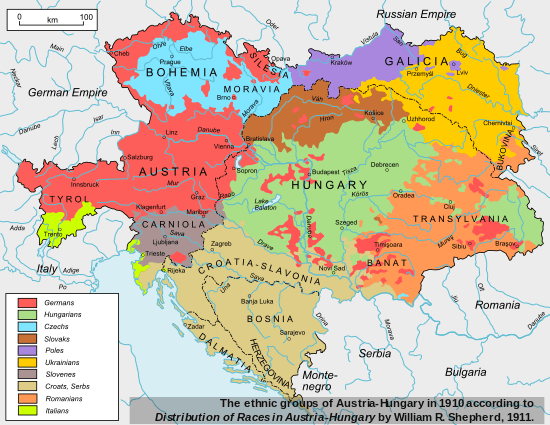
Official censuses with information on Transylvania's population have been conducted since the 18th century. On May 1, 1784 the Emperor Joseph II called for the first official census of the Habsburg Empire, including Transylvania. The data was published in 1787, and this census showed only the overall population (1,440,986 inhabitants).[31] Fényes Elek, a 19th-century Hungarian statistician, estimated in 1842 that in the population of Transylvania for the years 1830-1840 the majority were 62.3% Romanians and 23.3% Hungarians.[32]
In the last quarter of the 19th century, the Hungarian population of Transylvania increased from 24.9% in 1869 to 31.6%, as indicated in the 1910 Hungarian census. At the same time, the percentage of Romanian population decreased from 59.0% to 53.8% and the percentage of German population decreased from 11.9% to 10.7%, for a total population of 5,262,495. Magyarization policies greatly contributed to this shift.[33]
The percentage of Romanian majority has significantly increased since the declaration of the union of Transylvania with Romania after World War I in 1918. The proportion of Hungarians in Transylvania was in steep decline as more of the region's inhabitants moved into urban areas, where the pressure to assimilate and Romanianize was greater.[34] The expropriation of the estates of Magyar magnates, the distribution of the lands to the Romanian peasants, and the policy of cultural Romanianization that followed the Treaty of Trianon were major causes of friction between Hungary and Romania.[35] Other factors include the emigration of non-Romanian peoples, assimilation and internal migration within Romania (estimates show that between 1945 and 1977, some 630,000 people moved from the Old Kingdom to Transylvania, and 280,000 from Transylvania to the Old Kingdom, most notably to Bucharest).[36]
Current population
According to the results of the 2011 Population Census, the total population of Transylvania was 6.789.250 inhabitants and the ethnic groups were: Romanians - 70,62%, Hungarians - 17,92%, Roma - 3,99%, Ukrainians - 0,63%, Germans - 0,49%, other - 0,77%. Some 378.298 inhabitants (5,58%) have not declared their ethnicity. The presented data are from http://www.recensamantromania.ro/rezultate-2, the Table no. 7. The ethnic Hungarian population of Transylvania, largely composed of Székelys, form a majority in the counties of Covasna and Harghita.
The population is mostly of Hungarian ethnicity in Harghita County (84.8%) and Covasna County (73.6%). The Hungarians are also numerous in the following counties: Mureș (37.8%), Satu Mare (34.5%), Bihor (25.2%) and Sălaj (23.2%).
Economy

Transylvania is rich in mineral resources, notably lignite, iron, lead, manganese, gold, copper, natural gas, salt, and sulfur.
There are large iron and steel, chemical, and textile industries. Stock raising, agriculture, wine production and fruit growing are important occupations. Agriculture is widespread in the Transylvanian Plateau, including growing cereals, vegetables, viticulture and breeding cattle, sheep, swine, and poultry. Timber is another valuable resource.
IT, electronics and automotive industries are important in urban and university centers like Cluj-Napoca (Robert Bosch GmbH, Emerson Electric), Timișoara (Alcatel-Lucent, Flextronics and Continental AG), Brașov, Sibiu, Oradea and Arad. The cities of Cluj Napoca and Târgu Mureș are connected with a strong medical tradition, and according to the same classifications top performance hospitals exist there.[37]
Native brands include: Roman of Brașov (trucks and buses), Azomureș of Târgu Mureș (fertilizers), Terapia of Cluj-Napoca (pharmaceuticals), Banca Transilvania of Cluj-Napoca (finance), Romgaz and Transgaz of Mediaș (natural gas), Jidvei of Alba county (alcoholic beverages), Timișoreana of Timișoara (alcoholic beverages) and others.
The Jiu Valley, located in the south of Hunedoara County, has been a major mining area throughout the second half of the 19th century and the 20th century, but many mines were closed down in the years following the collapse of the communist regime, forcing the region to diversify its economy.
Culture
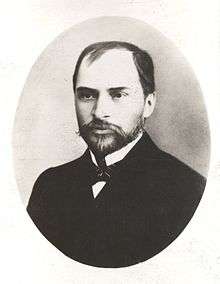
The culture of Transylvania is complex, due to its varied history. Its culture has been historically linked to both Central Europe and Southeastern Europe; and it has significant Hungarian (see Hungarians in Romania) and German (see Germans of Romania) influences.[38]
With regard to architecture, the Transylvanian Gothic style is preserved to this day in monuments such as the Black Church in Braşov (14th and 15th centuries) and a number of other cathedrals, as well as the Bran Castle in Braşov County (14th century), the Hunyad Castle in Hunedoara (15th century).
Notable writers such as Emil Cioran, Lucian Blaga, George Coșbuc, Octavian Goga and Liviu Rebreanu were born in Transylvania. The latter wrote the novel Ion, which introduces the reader to a depiction of the life of the peasants and intellectuals of Transylvania at the turn of the 20th century.
Transylvania has also been (and still is) a center for religions other than Eastern Orthodoxy - the religion that most Romanians follow. As such, there are significant numbers of inhabitants of Transylvania that follow Roman Catholicism in Romania, Greek Catholicism in Romania and Protestantism in Romania.[39]
Tourist attractions
- Bran Castle, also known as Dracula's Castle
- The medieval cities of Alba Iulia, Cluj-Napoca (European Youth Capital 2015), Sibiu (European Capital Of Culture in 2007), Târgu Mureș and Sighișoara (UNESCO World Heritage Site and alleged birthplace of Vlad Dracula)
- The city of Brașov and the nearby Poiana Brașov ski resort
- The city of Hunedoara with the 14th century Hunyadi Castle
- The citadel and the Art Nouveau city centre of Oradea
- The Densus Church, the oldest church in Romania in which services are still officiated[40]
- The Dacian Fortresses of the Orăştie Mountains, including Sarmizegetusa Regia (UNESCO World Heritage Site)
- The Roman forts including Sarmizegetusa Ulpia Traiana, Porolissum, Apulum, Potaissa and Drobeta
- The Red Lake (Romania)
- The Turda Gorge natural reserve
- The Râșnov Citadel in Râșnov
- The Maramureș region
- The Merry Cemetery of Săpânța (the only of that kind in the world)
- The Wooden Churches (UNESCO World Heritage Site)
- The cities of Baia Mare and Sighetu Marmației
- The villages in the Iza, Mara, and Viseu valleys
- The Saxon fortified churches (UNESCO World Heritage Site)
- Romanian traditions and folk culture, ASTRA National Museum Complex, Sibiu
- Hungarian traditions and folk culture
- The cafe culture,[41] street theatre and cosmopolitan society of Sibiu, Cluj-Napoca and Timișoara
- The Apuseni Mountains:
- Țara Moților
- The Bears Cave[42]
- Scarisoara Ice Cave, in Alba County, the third largest glacier cave in the world[42]
- The Rodna Mountains
Festivals and events
Film festivals
- Transilvania International Film Festival, Cluj-Napoca - Romania's biggest film festival
- Gay Film Nights, Cluj-Napoca
- Comedy Cluj, Cluj-Napoca
- Humor Film Festival, Timișoara [43][44]
Music festivals
- Golden Stag Festival, Brașov
- Gărâna Jazz Festival, Gărâna
- Peninsula / Félsziget Festival, Târgu-Mureș
- Untold Festival, Cluj-Napoca - Romania's biggest music festival
- Toamna Muzicală Clujeană, Cluj-Napoca
- Artmania Festival, Sibiu
- Electric Castle Festival, Bontida, Cluj-Napoca
Others
- Sighișoara Medieval Festival, Sighișoara
- Sibiu International Theatre Festival
- Festivalul Medieval Cetăți Transilvane Sibiu
Historical coat of arms of Transylvania
The first heraldic representations of Transylvania date from the 16th century. One of the predominant early symbols of Transylvania was the coat of arms of Sibiu city. In 1596 Levinus Hulsius created a coat of arms for the imperial province of Transylvania, consisting of a shield party per fess, with a rising eagle in the upper field and seven hills with towers on top in the lower field. He published it in his work "Chronologia", issued in Nuremberg the same year. The seal from 1597 of Sigismund Báthory, prince of Transylvania, reproduced the new coat of arms with some slight changes: in the upper field the eagle was flanked by a sun and a moon and in the lower field the hills were replaced by simple towers.[45]
The seal of Michael the Brave from 1600 depicts the territory of the former Dacian kingdom: Wallachia, Moldavia and Transylvania:[46]
- The black eagle (Wallachia)
- The aurochs head (Moldavia)
- The seven hills (Transylvania).
- Over the hills there were two rampant lions affronts, supporting the trunk of a tree, as a symbol of the reunited Dacian Kingdom.[46]
The Diet of 1659 codified the representation of the privileged nations in Transylvania's coat of arms. It depicted a black turul on a blue background, representing the Hungarian nobility,[47] a Sun and the Moon representing the Székelys, and seven red towers on a yellow background representing the seven fortified cities of the Transylvanian Saxons. The red dividing band was originally not part of the coat of arms.
In popular culture
Following the publication of Emily Gerard's The Land Beyond the Forest (1888), Bram Stoker wrote his gothic horror novel Dracula in 1897, using Transylvania as a setting. With its success, Transylvania became associated in the English-speaking world with vampires. Since then it has been represented in fiction and literature as a land of mystery and magic. For example, in Paulo Coelho's novel The Witch of Portobello, the main character, Sherine Khalil, is described as a Transylvanian orphan with a Romani mother, in an effort to add to the character's exotic mystique. The so-called Transylvanian trilogy of historical novels by Miklos Banffy, The Writing on the Wall, is an extended treatment of the 19th- and early 20th-century social and political history of the country. Among the first actors to portray Bram Stoker's Dracula in film was Bela Lugosi, who was born in Banat, in present-day Romania.
The Munsters were also said to be from Transylvania, referring to it several times in the show both by name and as "The Old Country".
In the film The Rocky Horror Picture Show, Tim Curry played a character that comes from "Transexual Transylvania."
The Sony Pictures Animation's animated Hotel Transylvania series takes place largely in Transylvania and nearby places. It recasts Dracula in a comic scenario.
In some versions of the story the Pied Piper of Hamelin leads the children of the village of Hamelin to Transylvania. The story may be an attempt to explain the migration of the Transylvanian Saxons from German lands.
See also
References
- ↑ "Transylvania Society of Dracula Information". Afn.org. 1995-05-29. Retrieved 2012-07-30.
- ↑ "Travel Advisory; Lure of Dracula In Transylvania". The New York Times. 1993-08-22.
- ↑ "Romania Transylvania". Icromania.com. 2007-04-15. Retrieved 2012-07-30.
- ↑ Engel, Pál (2001). Realm of St. Stephen: History of Medieval Hungary, 895–1526 (International Library of Historical Studies), page 24, London: I.B. Taurus. ISBN 1-86064-061-3
- ↑ Pascu, Ștefan (1972). "Voievodatul Transilvaniei". I: 22.
- ↑ István Lázár: Transylvania, a Short History, Simon Publications, Safety Harbor, Florida, 1996
- ↑ Martyn C. Rady: Nobility, Land and Service in Medieval Hungary, Antony Grove Ltd, Great Britain, 2000
- ↑ Gyula - it is possible that during the 10th century some of the holders of the title of gyula also used Gyula as a personal name, but the issue has been confused because the chronicler of one of the most important primary sources (the Gesta Hungarorum) has been shown to have used titles or even names of places as personal names in some cases.
- 1 2 3 "Transylvania". Encyclopædia Britannica. Encyclopædia Britannica, Inc. 2008. Retrieved 2008-08-01.
- ↑ Engel, Pal; Andrew Ayton (2005). The Realm of St Stephen. London: Tauris. p. 27. ISBN 1-85043-977-X.
- 1 2 "Transylvania", Microsoft Encarta Online Encyclopedia 2008 http://encarta.msn.com © 1997–2008 Microsoft Corporation. All Rights Reserved.
- ↑ K. HOREDT, Contribuţii la istoria Transilvaniei în secolele IV-XIII,Editura Academiei RSR, 1958 p. 113.
- ↑ I.M.Țiplic (2000). Considerații cu privire la liniile întarite de tipul prisacilor din transilvania, Acta terrae Septemcastrensis, I, pag. 147-164
- ↑ http://mek.oszk.hu/03400/03407/html/56.html
- ↑ Madgearu, Alexandru (2001). Românii în opera Notarului Anonim. Cluj-Napoca: Centrul de Studii Transilvane, Fundația Culturală Română. ISBN 973-577-249-3.
- ↑ Antonius Wrancius: Expeditionis Solymani in Moldaviam et Transsylvaniam libri duo. De situ Transsylvaniae, Moldaviae et Transalpinae liber tertius.
- ↑ Sándor Szilágyi: Erdély és az északkeleti háború. Levelek és okiratok Bp. 1890 I. 246-247, 255-256 - Sándor Szilágyi: Transylvania and the northeastern war. Letters and documents Bp. 1890 p. 246-247, 255-256
- ↑ "International Boundary Study - No. 47 – April 15, 1965 - Hungary – Romania (Rumania) Boundary" (PDF). US Bureau of Intelligence and Research.
- ↑ "Diploma Leopoldinum (Transylvanian history)". Britannica.com. Retrieved 2012-07-30.
- ↑ "Transylvania (region, Romania)". Britannica.com. Retrieved 2012-07-30.
- ↑ Peter F. Sugar. Southeastern Europe Under Ottoman Rule, 1354–1804 (History of East Central Europe), University of Washington Press, July 1983, page 163, https://books.google.com/books?id=LOln4TGdDHYC&pg=PA163&dq=independent+principality+that+was+not+reunited+with+Hungary&lr=
- ↑ John F. Cadzow, Andrew Ludanyi, Louis J. Elteto, Transylvania: The Roots of Ethnic Conflict, Kent State University Press, 1983, page 79, https://books.google.com/books?id=fX5pAAAAMAAJ&q=diploma+leopoldinum+transylvania&dq=diploma+leopoldinum+transylvania&lr=&pgis=1
- ↑ Paul Lendvai, Ann Major. "The Hungarians: A Thousand Years of Victory in Defeat" C. Hurst & Co. Publishers, 2003, page 146; https://books.google.com/books?id=9yCmAQGTW28C&pg=PA146&dq=diploma+leopoldinum+transylvania&lr=
- ↑ "Definition of Grand Principality of Transylvania in the Free Online Encyclopedia". Encyclopedia2.thefreedictionary.com. Retrieved 2012-07-30.
- ↑ Történelmi világatlasz [World Atlas of History] (in Hungarian). Cartographia. 1998. ISBN 963-352-519-5.
- ↑ Transilvania at romaniatraveltourism.com
- ↑ Transylvania at 1911 Encyclopedia Britannica
- ↑ http://www.recensamantromania.ro/wp-content/uploads/2013/07/REZULTATE-DEFINITIVE-RPL_2011.pdf
- ↑ "Population at 20 October 2011" (in Romanian). INSSE. July 2013. Retrieved 2 February 2014.
- ↑ Sibiu Cultural Capital Website
- ↑ http://www.hungarian-history.hu/lib/transy/transy03.htm
- ↑ Elek Fényes, Magyarország statistikája, Vol. 1, Trattner-Károlyi, Pest. VII, 1842
- ↑ Seton-Watson, Robert William (1933). "The Problem of Treaty Revision and the Hungarian Frontiers". International Affairs. 12 (4): 481–503. doi:10.2307/2603603.
- ↑ Varga, E. Árpád, Hungarians in Transylvania between 1870 and 1995, Translation by Tamás Sályi, Budapest, March 1999, pp. 30-34
- ↑ "Transylvania". Columbia Encyclopedia. Retrieved 2008-11-18.
- ↑ Varga, E. Árpád, Hungarians in Transylvania between 1870 and 1995, Translation by Tamás Sályi, Budapest, March 1999, p. 31
- ↑ http://www.ms.ro/upload/CLASIFICAREA%20SPITALELOR-1.pdf
- ↑ "Cultura". 2007-12-31. Archived from the original on December 31, 2007. Retrieved 2016-05-08.
- ↑ Earl A. Pope, "Protestantism in Romania", in Sabrina Petra Ramet (ed.), Protestantism and Politics in Eastern Europe and Russia: The Communist and Postcommunist Eras, Duke University Press, Durham, 1992, p.158-160. ISBN 0-8223-1241-7
- ↑ "Travel to Romania - Densus Church (Hunedoara)". Romanianmonasteries.org. 2006-05-31. Retrieved 2012-07-30.
- ↑ http://sibiupeople.ro/en/reports/732
- 1 2 "Apuseni Caves". Itsromania.com. Retrieved 2012-07-30.
- ↑ "Zilele Filmului de Umor 2014". timisoreni.ro. Retrieved 25 January 2015.
- ↑ "O nouă ediție a Zilelor Filmului de Umor la Timișoara". HotNewsRo. Retrieved 25 January 2015.
- ↑ Dan Cernovodeanu, Știința și arta heraldică în România, Bucharest, 1977, p. 130
- 1 2 "Coat of arms of Dacia (medieval)". Archived from the original on 9 April 2014.
- ↑ Ströhl, Hugo Gerard (1890). Oesterreichish-Ungarische Wappenrolle (PDF). Vienna: Verlag vom Anton Schroll & C°. p. XV. Retrieved 24 November 2011.
K. Horedt (1958) Contribuţii la istoria Transilvaniei în secolele IV-XIII, Editura Academiei RSR, 1958 p. 113
Further reading
 This article incorporates text from a publication now in the public domain: Chisholm, Hugh, ed. (1911). "article name needed". Encyclopædia Britannica (11th ed.). Cambridge University Press.
This article incorporates text from a publication now in the public domain: Chisholm, Hugh, ed. (1911). "article name needed". Encyclopædia Britannica (11th ed.). Cambridge University Press.- Patrick Leigh Fermor, Between the Woods and the Water (New York Review of Books Classics, 2005; ISBN 1-59017-166-7). Fermor travelled across Transylvania in the summer of 1934, and wrote about it in this account first published more than 50 years later, in 1986.
- Zoltán Farkas and Judit Sós, Transylvania Guidebook
- András Bereznay, Erdély történetének atlasza (Historical Atlas of Transylvania), with text and 102 map plates, the first ever historical atlas of Transylvania (Méry Ratio, 2011; ISBN 978-80-89286-45-4)
External links
| Wikivoyage has a travel guide for Transylvania. |
| Wikimedia Commons has media related to Transylvania. |
- RTI Radio - Radio Transsylvania International
- Tolerant Transylvania - Why Transylvania will not become another Kosovo, Katherine Lovatt, in Central Europe Review, Vol 1, No 14 27 September 1999.
- The History Of Transylvania And The Transylvanian Saxons by Dr. Konrad Gündisch, Oldenburg, Germany
- Transylvania, its Products and its People, by Charles Boner, 1865
- (Hungarian) Transylvanian Family History Database
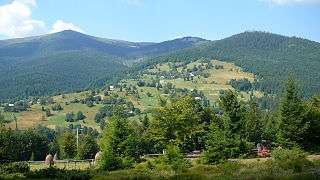

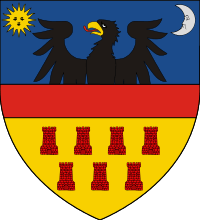
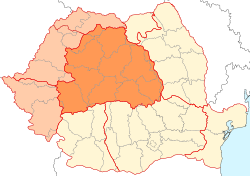
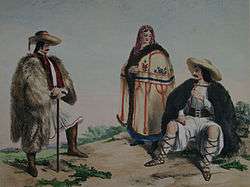
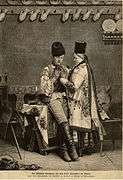

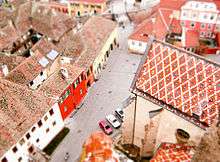
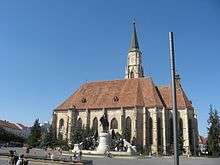

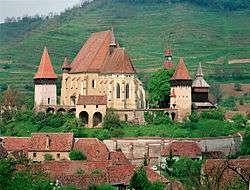
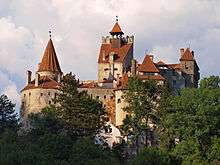
%2C_Cluj%2C_RO.jpg)
